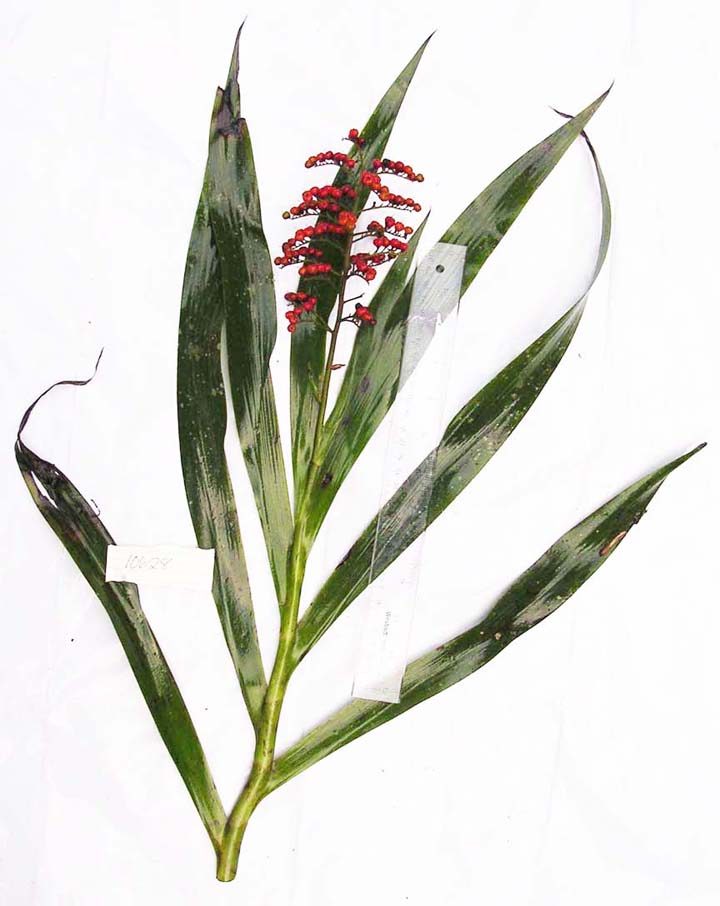
|
Haemodoraceae |
|
|
Herbs, perennial or rarely annual, rhizomatous, often stoloniferous; sap often red or orange. Stems simple. Leaves mostly basal, distichous, irislike; blade linear, sheathing proximally, folded lengthwise distally, folded portions becoming fused. Inflorescences terminal, cymose or corymbose, many-branched, many-flowered, loose or condensed. Flowers: tepals persistent, 6 in 2 whorls of 3, distinct above level of insertion on ovary, ± equal, aestivation valvate; stamens 3 or 6; filaments elongate; anthers basifixed, 2-locular, often basally sagittate, dehiscence introrse by longitudinal slits; pistil 1, compound, 3-carpellate; ovary inferior or half-inferior to nearly superior, 3-locular with axile placentae, or 1-locular distally with parietal placentae and 3-locular proximally with axile placentae; ovules 1, 3-6, or numerous in each locule, arranged in vertical rows or around margin of peltate placenta, orthotropous or anatropous; style 1, undivided, elongate; stigma 1, terminal, very small. Fruits capsular, dehiscence loculicidal. Seeds discoid and peltate, or elongate and variously curved; endosperm present. The two genera of Haemodoraceae found in North America are very different from each other. Lachnanthes belongs to tribe Haemodoreae and is morphologically similar to Dilatris P. J. Bergius of South Africa and Haemodorum Smith of Oceania. The relationships of Lophiola are more obscure and are discussed more fully in the references cited below and under that genus.
|
|
This project was made possible in part by the Institute of Museum and Library Services [MG-70-19-0057-19].
Powered by Symbiota


